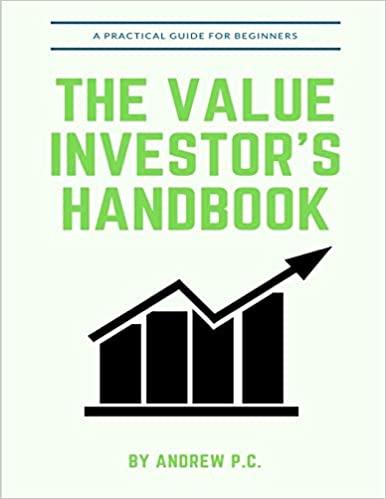Initial outlay Inflow year 1 Inflow year 2 Inflow year 3 Inflow year 4 Inflow year 5 PROJECT A -$110,000 20,000 30,000 40,000 50,000 70,000 PROJECT B -$110,000 40,000 40,000 40,000 40,000 40,000 In evaluating these projects, please respond to the following questions: a. Why is the capital-budgeting process so important? b. Why is it difficult to find exceptionally profitable projects? c. What is the payback period on each project? If Caledonia imposes a 3-year maximum acceptable payback period, which of these projects should be accepted? d. What are the criticisms of the payback period? e. Determine the NPV for each of these projects. Should either project be accepted f. Describe the logic behind the NPV. g. Determine the PI for each of these projects. Should either project be accepic h. Would you expect the NPV and PI methods to give consistent accept the decisions? Why or why not? i. What would happen to the NPV and PI for each project if the required return increased? If the required rate of return decreased? j. Determine the IRR for each project. Should either project be accepted upluuuuyello ww does a change in the required rate of retum affect the project's internal rate of return? at reinvestment rate assumptions are implicitly made by the NPV and IRR What reinves methods? Which one is better? You have also be of projects involv m. Caledonia is a been asked for your views on three unrelated sets of nroiects. Each se is involves two mutually exclusive projects. These projects follow. donia is considering two investments with 1-vear lives. The more expen- e of the two will produce more savings. Assume these projects are mutually dusive and that the required rate of return is 10 percent. Given the follow- ing free cash flows: Initial outlay Inflow year 1 PROJECT A --$195,000 240.000 PROIECT B -$1,200,000 1.650.000 1. Calculate the NPV for each project. 2. Calculate the PI for each project. 3. Calculate the IRR for each project. 4. If there is no capital-rationing constraint, which project should be selected? If there is a capital-rationing constraint, how should the decision be made? n. Caledonia is considering two additional mutually exclusive projects. The free cash flows associated with these projects are as follows: PROJECTB -$100.000 Initial outlay Inflow year 1 Inflow year 2 Inflow year 3 Inflow year 4 Inflow year 5 PROJECT A -$100,000 32,000 32,000 32,000 32,000 200.000 32,000 The required rate of return on these projects is 11 percent. 1. What is each project's payback period! 2. What is each project's NPV? 3. What is each project's IRR? 4. What has caused the ranking conflict 3. Which project should be accepted? Why? Initial outlay Inflow year 1 Inflow year 2 Inflow year 3 Inflow year 4 Inflow year 5 PROJECT A -$110,000 20,000 30,000 40,000 50,000 70,000 PROJECT B -$110,000 40,000 40,000 40,000 40,000 40,000 In evaluating these projects, please respond to the following questions: a. Why is the capital-budgeting process so important? b. Why is it difficult to find exceptionally profitable projects? c. What is the payback period on each project? If Caledonia imposes a 3-year maximum acceptable payback period, which of these projects should be accepted? d. What are the criticisms of the payback period? e. Determine the NPV for each of these projects. Should either project be accepted f. Describe the logic behind the NPV. g. Determine the PI for each of these projects. Should either project be accepic h. Would you expect the NPV and PI methods to give consistent accept the decisions? Why or why not? i. What would happen to the NPV and PI for each project if the required return increased? If the required rate of return decreased? j. Determine the IRR for each project. Should either project be accepted upluuuuyello ww does a change in the required rate of retum affect the project's internal rate of return? at reinvestment rate assumptions are implicitly made by the NPV and IRR What reinves methods? Which one is better? You have also be of projects involv m. Caledonia is a been asked for your views on three unrelated sets of nroiects. Each se is involves two mutually exclusive projects. These projects follow. donia is considering two investments with 1-vear lives. The more expen- e of the two will produce more savings. Assume these projects are mutually dusive and that the required rate of return is 10 percent. Given the follow- ing free cash flows: Initial outlay Inflow year 1 PROJECT A --$195,000 240.000 PROIECT B -$1,200,000 1.650.000 1. Calculate the NPV for each project. 2. Calculate the PI for each project. 3. Calculate the IRR for each project. 4. If there is no capital-rationing constraint, which project should be selected? If there is a capital-rationing constraint, how should the decision be made? n. Caledonia is considering two additional mutually exclusive projects. The free cash flows associated with these projects are as follows: PROJECTB -$100.000 Initial outlay Inflow year 1 Inflow year 2 Inflow year 3 Inflow year 4 Inflow year 5 PROJECT A -$100,000 32,000 32,000 32,000 32,000 200.000 32,000 The required rate of return on these projects is 11 percent. 1. What is each project's payback period! 2. What is each project's NPV? 3. What is each project's IRR? 4. What has caused the ranking conflict 3. Which project should be accepted? Why








